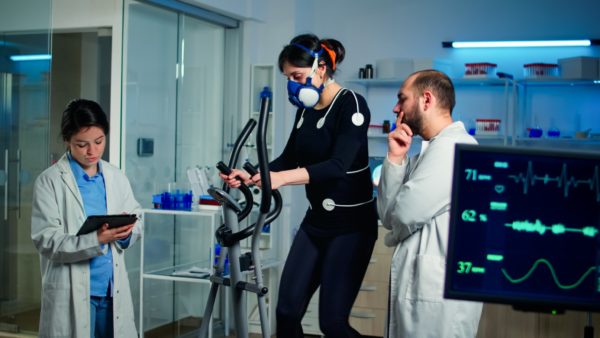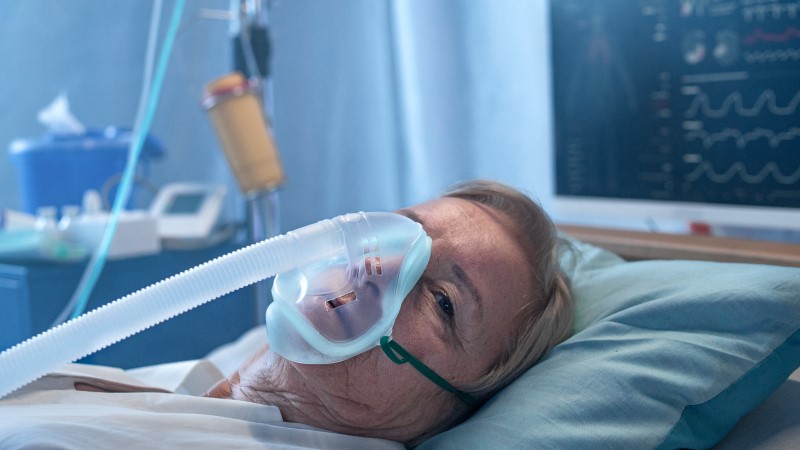Let’s face it… the past 2 years have not been what any of us could have predicted. COVID-19 has brought hardship to many in various aspects of life, but through adversity comes innovation. One community has demonstrated progress more than any other; science. Never has science played such a big role in shaping the outlook for the immediate future.
COVID-19 has presented a wide range of symptoms and side-effects. Although COVID-19 has largely been associated with the manifestation of respiratory symptoms, long-term consequences have been seen in multiple bodily systems and organs. A notable side effect is muscle weakness and exercise intolerance. It was estimated that muscle weakness and fatigue persisted for 6 months in up to 63% of patients who required hospital treatment.
Although we are continually building our knowledge of how COVID-19 infection affects the bodily systems, we are still a long way from fully understanding what the long-term neuromuscular and physiological effects of infection might be. New and innovative electromyography (EMG) tools are allowing for the short term rehabilitation of muscle strength, but combining multiple sensing modalities could provide crucial insight into the understanding of long term physiological adaptions.
How is Electromyography (EMG) helping COVID-19 rehabilitation?
@JenNicholsPhD lab is busy preparing activities with their @delsysinc EMG system for @BiomechanicsDay 2022!
— Gator Biomechanics (@Gator_ASB) January 12, 2022
Thanks @Bartemannekes and @VUBrussel for this fun game! pic.twitter.com/jrEUsqnBBt
Skeletal muscle weakness following COVID-19 hospitalisation is severely inhibiting the return of patients to their normal lives and leaving them with a higher predisposition to developing other diseases. Restoring muscle function is key to mitigating these problems and one group are using EMG to tackle the problem.
A research team from the Vrije Universiteit Brussel, led by Professor Bart Jansen, have developed an EMG driven rehabilitation game. The ‘Ghostly’ Android rehabilitation game, utilising the Delsys API software, uses the patient’s muscle activity to power and control the game character. In combination with Trigno Avanti sensors, ‘Ghostly’ offers clinicians a flexible tool for engaging rehabilitation.
The Ghostly game has since been deployed in COVID-19 rehabilitation units to help recover muscle mass and function. In the video, the patients described how much their lives have changed due to the incapacitating effects of COVID-19, but their resilience through rehabilitation remains unquestioned.
Skeletal muscle adaptions to COVID-19
COVID-19 infection has been resulting in muscle weakness, exercise intolerance and general fatigue, but large questions still remain about what the underlying physiological mechanisms behind these symptoms are.
A recent narrative review suggested there are multiple factors that contribute towards muscle weakness as a result of COVID-19 hospitalisation. Systemic inflammation (leading to motoneuron degeneration), enforced physical inactivity or disuse, viral infiltration, hypoxaemia and malnutrition are all thought to impact the advancement of muscle weakness with each contributing factors being enhanced by pre-existing comorbidities.
Speaking to the observed findings of the research group, Dr. Rob Wüst, an assistant professor in muscle metabolism from Vrije University Amsterdam, described some of the key takeaway messages:
“Large heterogeneity in the responses of COVID infection on the skeletal muscle has been seen. Most people present very few symptoms. However, for those who develop more acute symptoms, we see adaptions in the muscle that resemble intensive-care acquired muscle weakness.”
“The least well understood version of COVID infection is patients who present with mild disease but retain symptoms of fatigue, muscle weakness, sleep problems, and brain fog that have longer lasting consequences on skeletal muscle structure and function. For those people, we need to better understand the underlying mechanisms, as they do not fall under the normal “inactivity/inflammation causes muscle fatigue” heading. Their symptoms resemble closely what we also find in chronic fatigue syndrome, and clearly deserves further study.”
Longer lasting infections with flare-ups and persistent debilitating symptoms, including chronic fatigue, are presenting many questions for clinicians and researchers. This has been dubbed by many as “Long COVID”. Long COVID is real and it presents an area that needs to be fully understood.
How can we measure the effects of long COVID?
Long COVID is contributing to various functional deficits within the muscular, cardiopulmonary, and nervous systems with neuromuscular problems such as axonal degradation, decreased muscle membrane excitation and slowing of motor conduction velocities all being thought to contribute towards lower voluntary muscle activation following disease.
On-going research, headed by Dr Simone Porcelli, an Assistant Professor in Human Physiology at the University of Pavia, has started to characterise the mechanisms behind long COVID and the risks it presents.
“Since skeletal muscle possesses the angiotensin converting enzyme 2 (ACE2) receptor, to which SARS-Cov-2 binds, it follows that the involvement of the skeletal muscle could be due not only to the secondary effects of the infection (e.g. deconditioning, reduced oxygen supply from persistent lung disease, perfusion defects from cardiovascular defects and vascular damage), but also to the direct action of the virus on skeletal muscle cells.”
“Preliminary results from our experiments suggest that patients show lower aerobic fitness than healthy age-matched subjects mainly due to impairments in the muscle capacity to extract and utilize oxygen. Interestingly, these alterations were associated to excessive fatiguability evaluated by electrically stimulated and maximal voluntary isometric contractions of knee extensors.”
“The identification of any covid-19 myopathy would be of great importance to limit the clinical consequences and define adequate counteracting interventions, leading to improved quality of life for many patients and decreased cost for the National Health Systems.”
The bodily systems clearly do not work independently from each other and, as such, should not be evaluated independently either.

To answer these questions about the interactions between multiple bodily systems, new tools have been developed to integrate the measurement data of different sensing modalities and modern technology. Trigno Link provides a comprehensive picture of human physiology and neuromuscular control through real-time unification of data into the Trigno ecosystem.
There are clearly more questions that need to be answered on the long-term physical effects of COVID-19, but understanding some of the key adaptions that result from hospitalisation and acute disease will help to inform best practices for functional rehabilitation.
For more information on biomechanical, physiological and metabolic tools for health and performance assessments, please contact one of our team at contact@delsyseurope.com.





